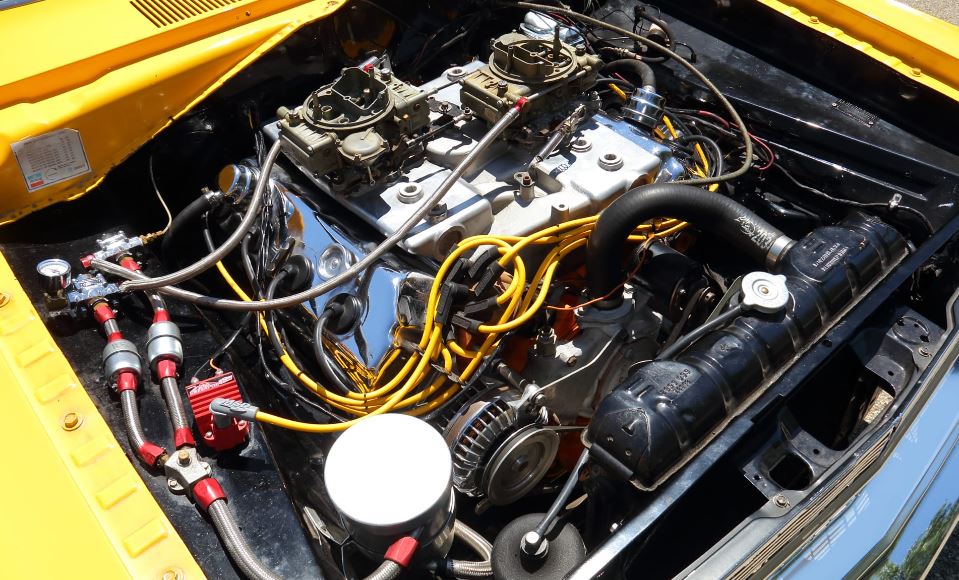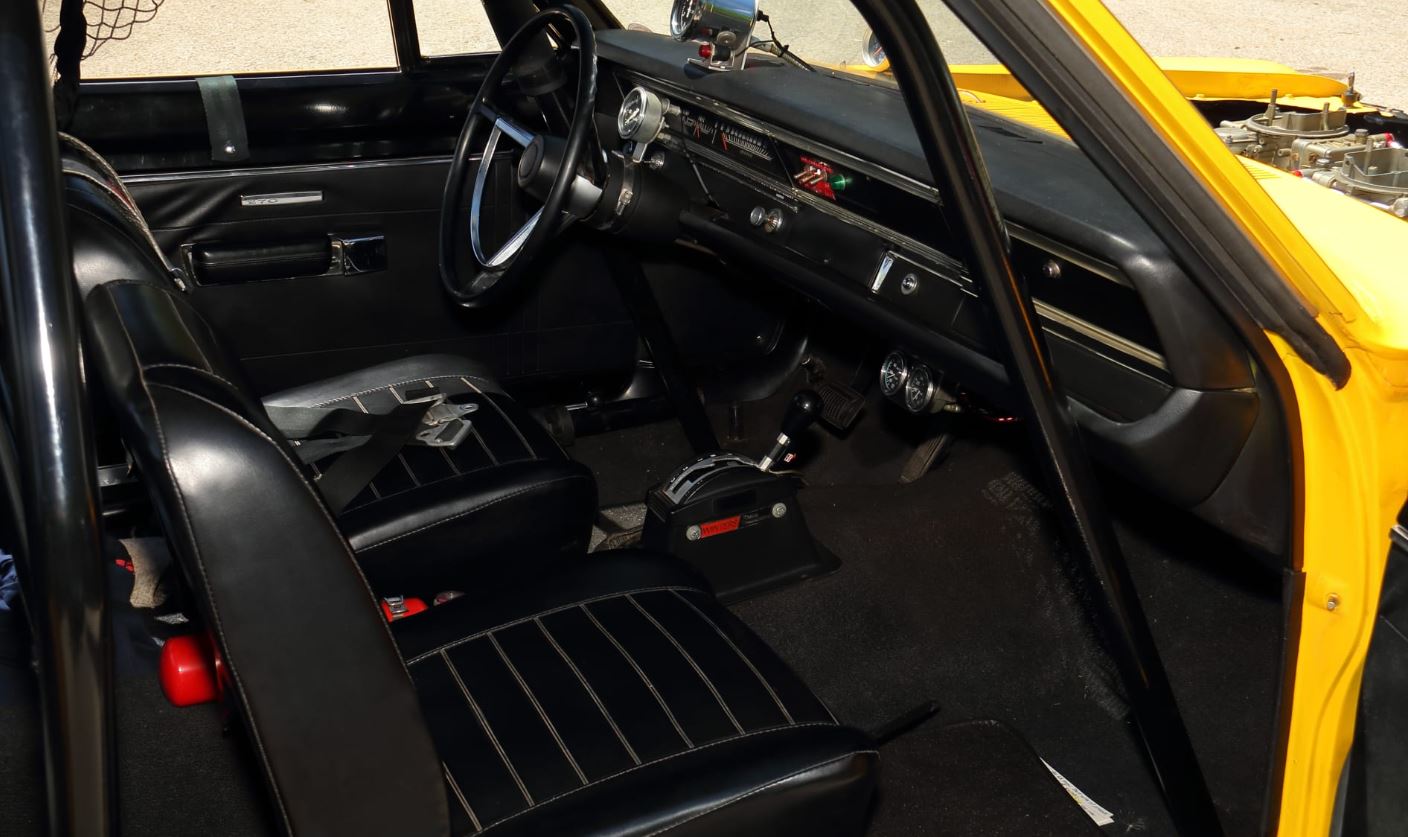Produced from 1960 to 1976, the Dodge Dart was marketed in three different segments. Introduced as a full-size car, the Dart was redesigned into an intermediate in 1962. One year later, it was downsized again to company duty.
Like most compacts of the era, the Dart was eventually offered with high-performance engines. However, Dodge stopped at the 383-cubic-inch (6.3-liter) V8. The 440-cubic-inch (7.2-liter) only appeared briefly in 1969, while the 426-cubic-inch (7.0-liter) HEMI didn’t find its way under the Dart’s hood.
However, while Dodge did not offer the HEMI via the options list, the 2×4-barrel mill was actually fitted into a limited-edition version of the compact. It was created in 1968 for drag racing, and it’s known as the L023 Super Stock.
Based on the GTS hardtop version, the Dart underwent radical modifications to become a full-fledged dragster. Dodge replaced the front fenders and the hood with fiberglass panels while the doors were acid-dipped and got thinner glass.
The L023 also lacked a rear bench, while the front seats were replaced with the lighter units of the Dodge A100 van. To shed even more weight, Dodge got rid of all the convenience features that weren’t necessary at the drag strip. The L023 lacked the center console, heater, sound deadening, radio, carpeting, and armrests. When Dodge was done with it, the HEMI Dart tipped the scales at around 3,000 pounds (1,361 kg).
Of course, stuffing the 426 HEMI under the hood was challenging. The swap was handled by Hurt Performance, which also modified the rear fenders to accommodate bigger wheels and thicker tires. Underrated at 425 horsepower (actual output was said to exceed 500 horses), the HEMI Dart needed less than 11 seconds to cover the quarter-mile. Further modifications turned the Dart into a nine-second beast and the car to beat in Class B Super Stock racing.
Although the factory dragster was still road-legal, it came with a disclaimer that it wasn’t for street use. Dodge built only 80 units in 1968, making it the rarest and most desirable iteration of the nameplate. Plymouth built a similar version of the Barracuda called the B023 and limited to 50 examples.
How many of those 80 HEMI Darts are still around? Well, fewer than that have survived, and some of them have lost their original units. If you’re in the market for a 1968 L023 that still rocks a numbers-matching HEMI, this yellow drag-strip rocket is a great option.
Restored and in tip-top shape inside and out, this rare HEMI Dart is about to go under the hammer at Mecum’s Harrisburg auction on July 27, 2024. No pricing estimate is available, but it could fetch more than $200,000. In recent years, L023 Darts have changed hands for $159,500 to $302,500. How much do you think this one is worth?


